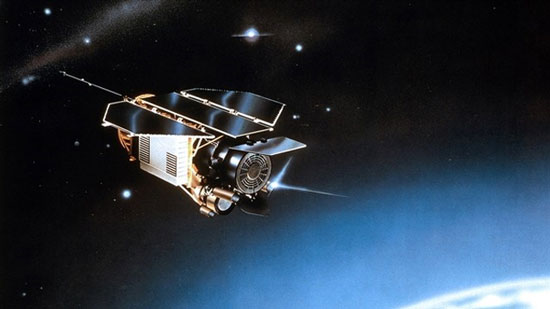Satellite Rosat rushes into the earth's atmosphere
The big truck-sized satellite has plunged into the atmosphere and its debris might hit the earth today, the German space agency announced.
>>>Can German satellites fall to Vietnam?
No information is currently available to predict which expired satellite is on the continent or country. The satellite is named ROSAT, German space agency spokesman Andreas Schuetz said.
ROSAT, about the size of a light truck, is supposed to burn when it touches the atmosphere, but there will be about 30 heavy debris totaling about 1.87 tons that can crash into our earth with speed. 450km / h.ABC news agency led news from the US aerospace agency said satellite touches the atmosphere about 9am this morning (Hanoi time). Each of its orbits took about 90 minutes and debris could spread throughout its path. Scientists say the time since the object touches the atmosphere until it reaches a few hours.

Images illustrating Rosat satellite in the universe.
Scientists have lost the ability to communicate with this dead satellite, the AP said. Experts are now waiting "and observations all over the world" , said the spokesman.
Before satellites enter the atmosphere, scientists say it is more likely to not plunge into Europe, Africa and Australia. According to the satellite route calculation, it may be above Asia, possibly China, when it starts to touch the atmosphere. However, Schuetz said it was not possible to confirm the actual position that Rosat would rush into.
Engineers also predict that this satellite will most likely plunge into the sea, because the earth has up to 75% of the sea surface. The US aerospace agency said that over the space there are tens of thousands of objects waiting to fall.
"There are 16,000 objects on earth orbit, most of them are small garbage, but there are 7,000 large objects such as spacecraft or missile bodies, they are flying chaotic over there," a NASA official said. .
The ROSAT satellite, which weighs nearly 2.5 tons, was launched from the US state of Flordia, by Delta 2 boosters in 1990. It has no propulsion or propulsion system because it uses a steering wheel to Telescope direction on targets in the universe. Rosat stopped operating in 1999 at a height of 563km.
After decommissioning, the height of Rosat gradually decreases. Because satellites fly around the earth in a 90-minute cycle, scientists can only guess it will fall anywhere below its path - a large expanse of land between 53 north latitudes and 53 latitudes. male level.
The rate for a broken piece to hit someone on the earth is 1/2000. With 7 billion people, deducing the rate for a piece of ROSAT satellite to hit someone is only about 1 part 14 trillion.
Last month a NASA satellite died in the southern Pacific Ocean, causing no loss of life and property.
- Estimated Rosat satellite plunges down to the weekend
- Rosat 'satellite may fall to the Indian Ocean'
- Beijing 'narrowly escaped death'
- Can the German satellite fall to Vietnam?
- Old satellites race each other to fall to Earth
- Accurate fall point of German satellites
- GOCE satellites have entered the Earth's atmosphere
- NASA is ready to launch satellites to measure CO2 on Earth's atmosphere
- The fall of satellites made the Earth
- Vietnam micro-satellites complete the task
- Detecting oxygen on Saturn satellite
- NASA launches satellites to explore the mysterious region of the atmosphere
 Van Allen's belt and evidence that the Apollo 11 mission to the Moon was myth
Van Allen's belt and evidence that the Apollo 11 mission to the Moon was myth The levels of civilization in the universe (Kardashev scale)
The levels of civilization in the universe (Kardashev scale) Today Mars, the sun and the Earth are aligned
Today Mars, the sun and the Earth are aligned The Amazon owner announced a secret plan to build a space base for thousands of people
The Amazon owner announced a secret plan to build a space base for thousands of people